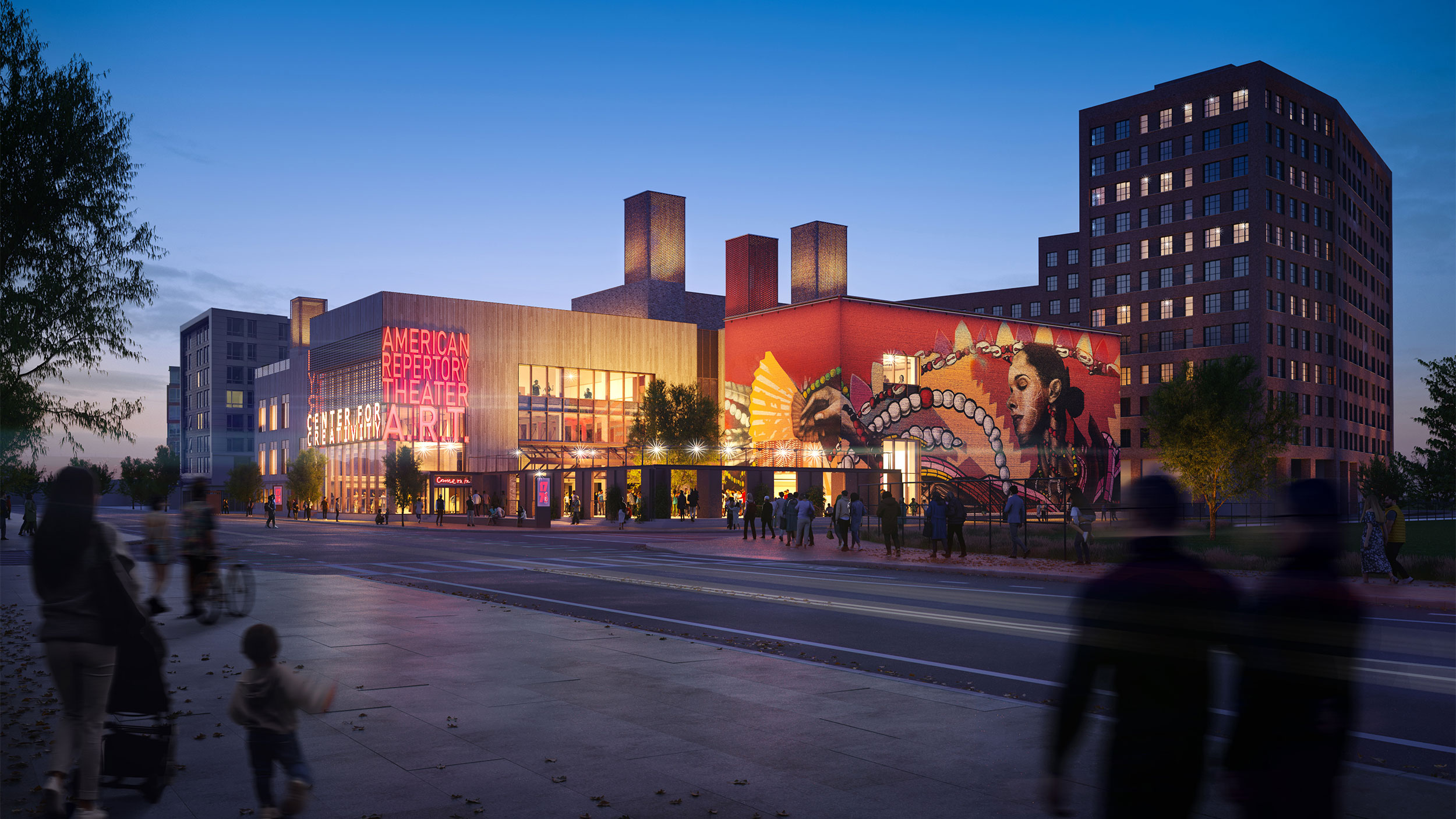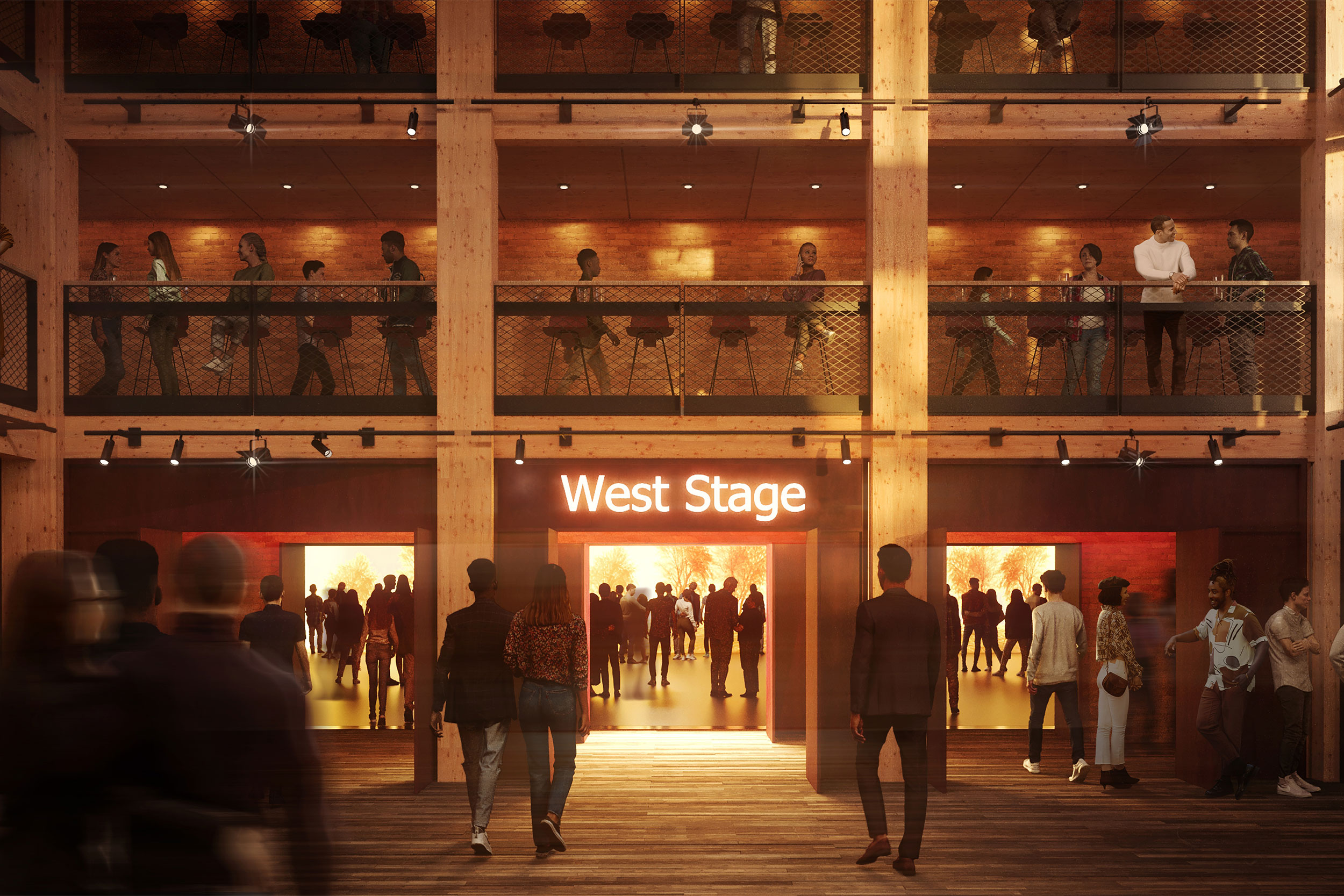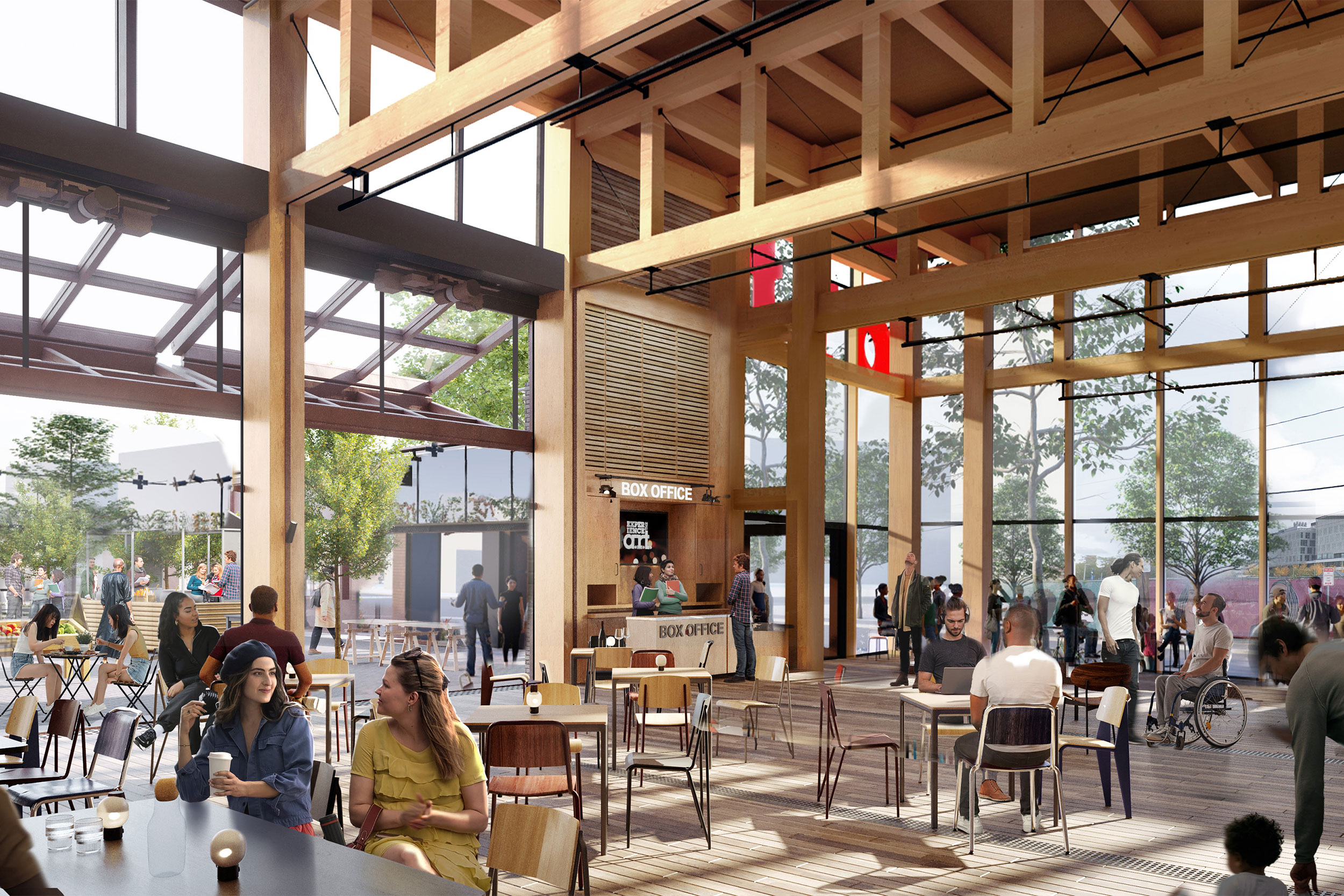City approves new home for A.R.T. in Allston

Architectural rendering of the A.R.T.’s new home in Allston.
Credit: Dematerial
Project includes large residential building for Harvard affiliates, will add to vibrancy of emerging hub of creativity, innovation
The Boston Planning and Development Agency on Thursday approved an innovative new University project in Allston that will serve as the new home for the American Repertory Theater (A.R.T.) and add 276 residential units amid a housing crunch in Greater Boston.
The 70,000 square-foot David E. and Stacey L. Goel Center for Creativity and Performance will include two flexible performance venues, rehearsal studios, teaching spaces, a spacious public lobby, and an outdoor performance yard. The 175 North Harvard St. project will also include a residential building that can accommodate about 500 Harvard affiliates in units ranging in size from studios to four-bedroom townhouses.
“Harvard is delighted to move ahead with creating a new home for the A.R.T. in Allston. This center for creativity and performance will enable the A.R.T. to expand its remarkable and dynamic work and will add to the creative energy already developing within the Harvard Innovation Labs, Harvard Business School, the Science Engineering Complex, and the emerging Enterprise Research Campus, all within the existing robust arts scene in Allston,” said Harvard’s Executive Vice President Meredith Weenick.
“We are thrilled that the creation of significant new University housing might reduce pressure on a stressed local housing market and create further opportunities for the Harvard community to more deeply engage in Allston’s creative and distinct neighborhood culture,” she said. “We are grateful to the city of Boston, the BPDA, and our Allston-Brighton community partners and elected officials for their collaboration and engagement throughout this process.”
The project will be located around the corner from the University’s Science and Engineering Complex on Western Avenue and a half-mile from the Enterprise Research Campus, which is under development in partnership with Tishman Speyer. Planners hope the creation of a new home for A.R.T. and significant residential space will further enhance and add vibrancy to an area that is becoming a hub of creativity and innovation in Allston.
A leading force in the American theater, the A.R.T. has produced groundbreaking theater at the Loeb Drama Center on Brattle Street in Harvard Square since its founding in 1980. A gift to Harvard in 2019 of $100 million from College alumnus David E. ’93 and Stacey L. Goel catalyzed the process of reimagining the University’s arts campus to include a new home for the A.R.T. that would enhance the arts communities on campus and in Greater Boston.

Two flexible performance venues are included in the design.
Credit: Dematerial
“For the last four decades, A.R.T. has had a beautiful home at the Loeb Drama Center, but over time our vision has expanded and so has our work. Our focus on students, audiences, and how we build community is now at the center of what we do. Porous and welcoming, the intentional architecture of A.R.T.’s new home will galvanize creativity and collaboration and fuel our mission to expand the boundaries of theater for decades to come,” said A.R.T. Terrie and Bradley Bloom Artistic Director Diane Paulus ’88.
A.R.T. announced in 2019 it had selected Haworth Tompkins to lead a team that includes theatrical consultant Charcoalblue and Boston-based ARC/Architectural Resources Cambridge to design its future home.
The project is the first building in the U.S. designed by U.K.-based Haworth Tompkins, which won the Royal Institute of British Architects 2014 Stirling Prize for its design of Everyman Theatre in Liverpool, England. The award is presented to the architects of the building that has made the greatest contribution to the evolution of architecture in the past year.

East view of Goel Center lobby.
Credit: Haworth Tompkins
The A.R.T. selected Haworth Tompkins for its experience with sustainable design and urban development, as well as approaches to democratizing the theatergoing experience and to the role that theaters can play within their communities.
The new center for creativity and performance is designed to meet Harvard’s ambitious sustainability goals and priorities and to serve as a model for the next generation of cultural architecture through its core principles of openness, artistic flexibility, collaboration, sustainability, and regenerative design. Both the center and the accompanying residential building are pursuing Living Building Challenge core certification from the International Living Future Institute.
“Theater is about exploring our shared humanity in a space where people of all backgrounds come together and are invited to open their hearts. Through an inspiring and collaborative design process, our building aims to extend that open invitation to Allston and the wider world, and to provide a framework that supports the expansion of creative practices within a radical yet simple architecture of adaptable space, natural tactile materials, fresh air, and light,” said Roger Watts, director of Haworth Tompkins.
Through several years of collaborative conversations with the community, the BPDA, the A.R.T., and the architect teams, the center for creativity and performance underwent considerable refinement to dovetail the spatial and urban program with the existing Allston neighborhood, the emerging urban plan, and A.R.T.’s developing organizational vision.
A.R.T. expects to break ground in 2024 and begin producing in the new facility in late fall 2026.
“Thanks to our incredible design team, our Harvard collaborators, the community, A.R.T.’s boards and staff, and the BPDA, we’ve arrived at this essential moment: the opportunity to build a center for creativity and performance that serves A.R.T.’s ever-expanding vision of how to expand the boundaries of theater in partnership with our greater community,” said A.R.T. Executive Director Kelvin Dinkins Jr.




